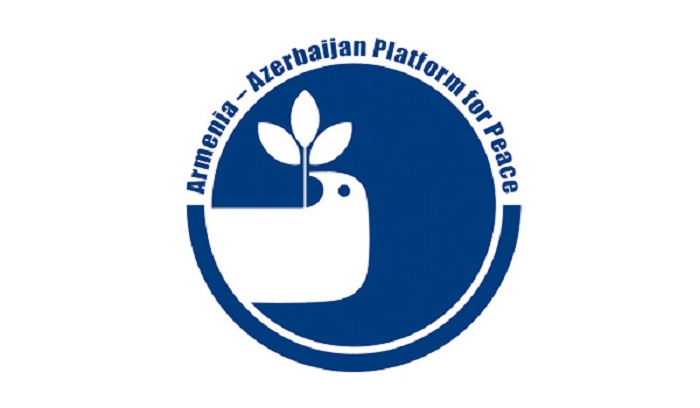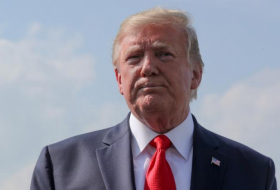Rocky road of peace activists in Armenia and Azerbaijan

Azerbaijan and Armenia have been locked in a “frozen conflict” for a half century with no peaceful resolution in sight. This conflict, were it to turn hot, promises to grow into a regional conflagration involving larger and much more powerful states, as they square off in defense of their respective allies.
Azerbaijan, Armenia, and Georgia are the three nations that make up the strategically important South Caucasus region of Eurasia, all once part of the Soviet Union and currently independent states.
Although, during the years of the USSR, Azerbaijan and Armenia served as fellow Soviet Socialist Republics, today, Azerbaijan and Armenia are found at opposite ends of this region’s particular geopolitical and geostrategic divide. While Azerbaijan allies itself with the U.S., Israel, and the West, Armenia is closely allied with Russia and Iran.
During the fall of the Soviet Union, Armenia and Azerbaijan fought a bloody war in the Azerbaijani region of Nagorno-Karabakh. With the aid of Red Army troops and the materiale support of Iran, Armenia narrowly secured a victory and occupied Nagorno-Karabakh and seven surrounding districts of Azerbaijan, accounting for roughly 24 percent of Azerbaijan’s newly independent territory.
Wholesale murder, rape, burnings, and the razing of villages, towns, and cities ruled the day. In the end, some 30,000 people were killed on both sides and Nagorno-Karabakh and the adjacent regions were ethnically cleansed of all Azerbaijani people. According to a 1993-1994 Human Rights Watch report, “…Karabakh Armenian forces with the support of the Republic of Armenia were responsible for the majority of abuses during that period.”
Today, nearly one million internally displaced people (refugees) live in Azerbaijan awaiting the end of the conflict and a return to their homes, villages, towns, cities, and lands. This, while, the “line of contact” between occupied Nagorno-Karabakh and Azerbaijan proper is heavily militarized.
Although there is a daily exchange of fire across the “line of contact,” in April of 2016, Armenian forces, perhaps in response to Azerbaijani military maneuvers, launched a bombardment utilizing heavy weapons. Azerbaijan responded and, to the surprise of Armenian commanders, displayed their advanced command and control systems, state of the art and high-tech weaponry and newly well-trained troops. At the end of the “4-day war,” Armenian forces were routed and Azerbaijan liberated a large swath of land, including a strategic highland.
Had that short war progressed and grown hotter, it would have surely pulled in Turkey, Israel, and the U.S., in a tertiary fashion, on the side of Azerbaijan, while Iran and Russia would have sided with Armenia. This is a recipe for all out regional war and beyond — a world crisis.
Platform for Peace seeks to bypass the “peacemakers” — such as the OSCE Minsk Group, chaired by the U.S., Russia and France, who have dithered for more than two decades with nothing to show for itself — and begin making peace beginning with its charter members and then “exporting” their accomplishments.
The frozen conflict has taken its toll of both societies.
Azerbaijan, blessed with plentiful oil and natural gas, a drive for Euro-Atlantic integration and a key geographical location, has built modern infrastructure, educational institutions and a diverse and growing non-energy business sector. Its capital city, Baku, a cosmopolitan and modern city, was named No. 1 of TripAdvisor’s Traveler’s Choice list for “Destinations on the Rise-Asia” for 2016.
Azerbaijan sits at the cross roads of the newly revived Silk Road and has made itself a key to energy diversity and security of Europe and Western markets and indispensable to trade between Europe, Central Asia and China. All this success while nearly one million people live in settlements built by the government as they insistently wait to go home once the Nagorno-Karabakh Conflict is over.
Armenia, cutoff from the vast development of the region because of its insistence on remaining master in Nagorno-Karabakh, remains stagnant and suffering from a brain drain. Yerevan remains, at best, a backwater city, as Armenia depends increasingly on the not-at-all altruistic largess of its only existing allies — Russia and Iran. Armenia is the last of the former Soviet Republics to have Russian troops on its soil. Its borders and airspace are controlled by Russia and recently Armenia announced that it would defer its entire foreign policy to the Kremlin.
Platform for Peace is rapidly becoming a force to be reckoned with, as it works to alleviate the dangers to the region in the form of a hot war and the lack of human development emanating from the Nagorno-Karabakh Conflict.
I hope you are informed and given cause for pause by the following article by the two lead persons of Platform for Peace.
*********
The Rocky Road of Peace Activists in Armenia and Azerbaijan
By Susan Djaginian and Shalala Hasanova
For nearly 30 years, the Armenian and Azerbaijani people have suffered from a painful and bloody conflict in the war-torn region of Nagorno-Karabakh in Azerbaijan. During this time, through division and occupation, tens of thousands of innocent lives have been lost and a significant displacement of nearly one million civilian refugees from the region occurred. The conflict has denied a normal life to generations of Armenians and Azerbaijanis and, even more dangerously, has threatened the very future of our region. The consequences of the conflict are evident in Azerbaijan’s displaced communities and its war-damaged regions. They are also reflected in Armenia’s near-empty and underdeveloped towns and villages, at least those where citizens who haven’t fled Armenia suffocate in isolation and economic decline.
Such suffering is neither inevitable, nor necessary. In fact, living together in peace is the best future for our region and the only real answer to the challenges facing Armenia and Azerbaijan. We are often told that our people cannot live together. There are some skeptics in Azerbaijan, and, in Armenia, the officials frequently mention “ethnic incompatibility.” Simplistic stereotypes might be tempting, but they are simply wrong. The history of the Armenian and Azerbaijani people is full of centuries of shared joy and hardship, cooperation and friendship. This should be the basis for our future, not the bitter experience of the last 30 years imposed on us by militant, ethnic chauvinists and violent separatists.
The close partnership between Azerbaijan and Georgia versus Armenia’s chronic isolation underscores the existing possibilities as well as the opportunities missed. This can change by bringing together Azerbaijan’s tradition of diversity and inclusiveness with Armenia’s talents to build a better South Caucasus. This ideal would reflect a region where Armenian and Azerbaijani communities live next to each other in Nagorno-Karabakh in peace and where Azerbaijanis no longer suffer in decades-long exile and Armenians don’t live in a mono-ethnic society that is hostage to expansionist militancy.
Last December, the two of us, coming from Armenia and Azerbaijan along with our colleagues from both countries, have recently launched the “Platform for Peace.” The Platform has already brought together Armenian and Azerbaijani civil society activists, and the number of supporters is growing. We are grateful to all who support our initiative, and we understand those who remain skeptical. We are also hopeful that our call for peace can help our nations move closer to ending this conflict and to healing divisions.
One of the Platform’s many goals is to “prevent further casualties from both sides” by promoting the resolution of the conflict by “peaceful means.” The Platform calls for the respectful recognition of Azerbaijan’s territorial integrity and the need to return the IDPs to their homeland with “dignity and safety.” It also stressed the need for the liberation of seven districts adjacent to the Nagorno-Karabakh region of Azerbaijan from occupation as an important starting point for step-by-step settlement of the conflict and building lasting peace in the region.
The skeptics have seen initiatives for peace before being imposed from outside our region, more of a formality for foreign donors than a real thing. For more than a quarter of the century, the frustrating and fruitless peace talks have become a back-burner issue for international organizations and negotiators. The contrast between international negotiators as peacemakers and those of us in the region as troublemakers is now a convenient cliché, an easy way to explain away the lack of interest in settling the conflict. We, on the other hand, believe that the future of the South Caucasus is in our hands, in the hands of our people. Our Platform was born in the South Caucasus to bring peace to our region.
In both Armenia and Azerbaijan, women have traditionally been peacemakers and, throughout history, they have stepped up to the challenge of ending hostilities. Perhaps, we too can make our own contribution to this honorable tradition. With new members joining the Platform for Peace, we are optimistic; with our message resonating among Armenians and Azerbaijanis alike, we are determined to see our hopes for peace come true.
And, so, we continue our efforts.
Ms. Susan Djaginian is the vice-president of the “Meridian,” an Armenian human rights non-governmental organization. Ms. Shalala Hasanova is chairperson of the “Support for the Development of Communication with Public,” a Public Union in Azerbaijan. They are among the six founding members of the Armenia-Azerbaijan Platform for Peace.
/Spectator.org/















































